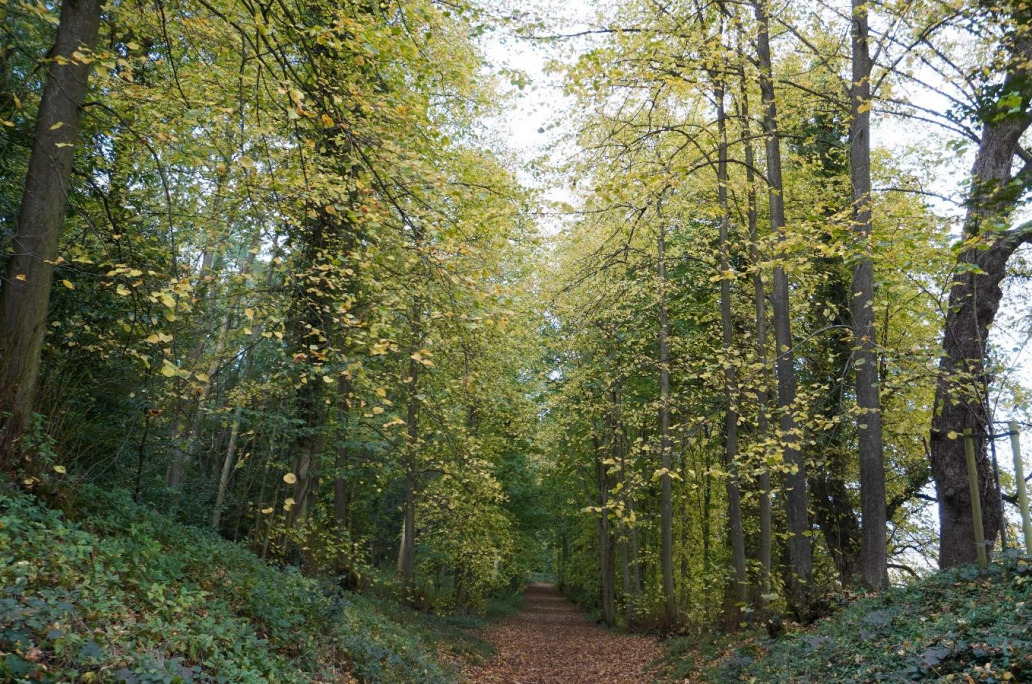The Lime Avenue, Ampthill Great Park



Greensand Country Heritage Trees
In Tudor times Ampthill Park was part of the Royal Estate but it was the Great Lodge, on the north side of the greensand ridge, that was re-built in the 1600’s to become a stately home. In 1687 an avenue was planted from the Bedford Road towards the south-east front of the house with 125 lime trees. The avenue of trees stops not far behind where you are standing. This is because the road was later moved to the east to a more sunken, less prominent position. With such a steep incline to the house it is understandable that the main entrance for carriages was on the north-east side and this grand avenue was pedestrian only and called “Green Walk” and then “Lime Walk”. It would have created an impressive vista from the garden at that time.
The lodge had also been re-named as Park House when, in 1770, Lancelot ‘Capability’ Brown was commissioned to reform the park and garden. Brown was not a fan of avenues or straight lines and the planting of The Laurels (locally called ‘The Darkenings’) with evergreen and more broadleaved trees would have visually broken up this landscape feature without removing it. Other short avenues were later planted to either bring people into Lime Walk from the park or, lead you out to enjoy vistas across the park, as you can today.
The avenue itself is possibly the oldest surviving example of such a planting in the county and by the 1830’s the great horticulturalist and author John Claudius Loudon, described Lime Walk as being “…one of the finest avenues of lime trees in the world.” If you walk on down the avenue you will notice some of the trees are now growing as multiple stemmed clumps. This is because many of the trees were cut down in 1957 by the Urban District Council when they acquired Ampthill Great Park and this publicly accessible part of Lime Walk.
The trees are all Common lime (Tilia x europaea), considered to be a natural hybrid between our two native lime trees, the Small-leaved lime (Tilia cordata) and Large-leaved lime (Tilia platyphyllos) and as such it has features of both trees. In the late 17th century these were being selected for their uniformity to plant the fashionable avenues. Lime were propagated by layering from a single tree creating a clone of that tree to ensure this uniformity of growth. Many were being grown in nurseries in Holland and Germany and two main clones were planted in Britain. See if you can spot them? In maturity one has a fluted trunk, with burrs and sprouts arising from the base and trunk (‘Pallida’), whilst the second has smooth, slightly flaky, bark on a cylindrical trunk, with some sprouts around the base. This tree arises to some height before branching and is known as ‘Hatfield Tall’. Typical of lime trees in Bedfordshire many of both clones are carrying large clumps of mistletoe high up in their crowns, most noticeable during the winter.
You will see both clones in Lime Walk, which is not uncommon in lime avenues of this age, with ‘Pallida’ being more dominant. Whether these were deliberately, or accidentally, mixed when planting or, if ‘Hatfield Tall’ were a later replacement for trees that had died, we do not know. As its name suggests ‘Hatfield Tall’ is the tallest tree in Lime Walk with several over 34m (at Wrest Park, Silsoe, ‘Hatfield Tall’ planted in the early 1700’s are over 40m). Their girths (trunk circumference) do not appear to be large enough for a tree over 300 years old but avenue trees can be deceptively small due to them competing for nutrients and a lack of light for crown spread. The trees here are similar in size to other lime avenues of this age, planted this close together.
The Heritage Tree Post has been installed with kind permission of Ampthill Town Council.








































